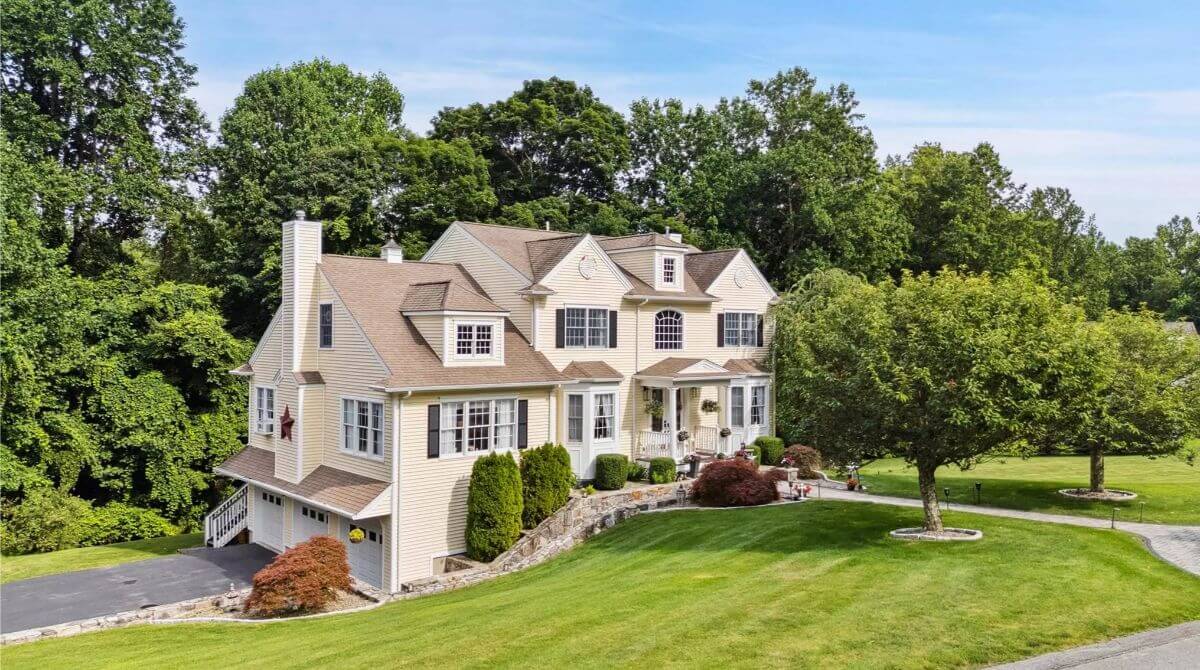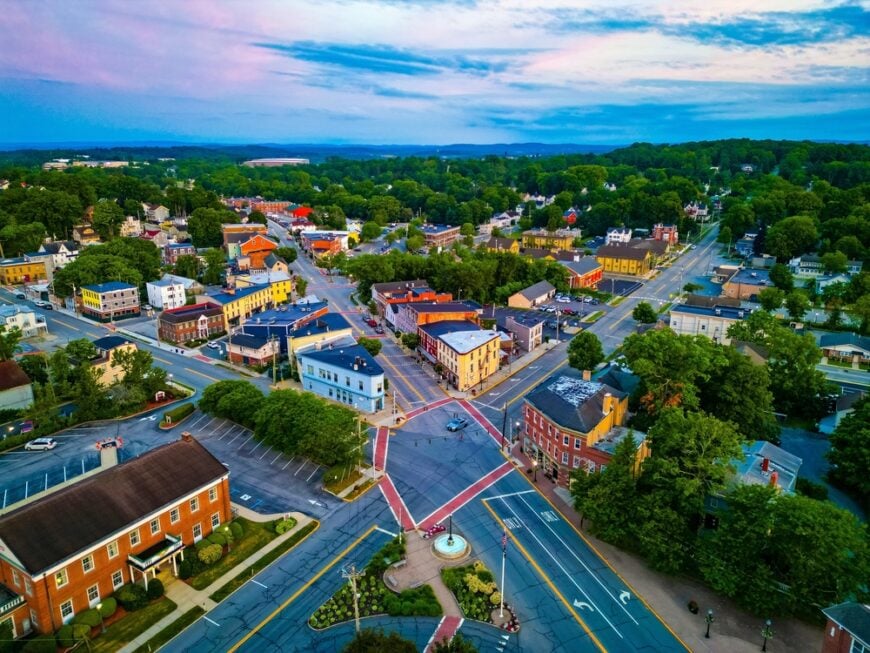
Southern New York is dotted with villages and small cities whose streets, taverns, and stone houses still echo the footsteps of Continental soldiers.
Our journey through these places offers a chance to trade textbooks for weather-worn churchyards, encampment fields, and cozy museums where artifacts sit only inches from curious eyes.
From clandestine spy captures to the final encampment of the army, every stop reveals a fresh detail that ties local heritage to the wider fight for independence. We enjoy how each town balances everyday life with a quiet pride in its past—sometimes through lively reenactments, other times through a plaque on an old wall.
While the Hudson River is often the unifying backdrop, hills, lakes, and river valleys give every destination its character. Pack a notebook, comfortable shoes, and a sense of wonder: these seventeen towns turn Revolutionary history into a living, walkable story.
17. Pawling: Explore the Town Where Washington Made His Headquarters

Pawling’s tree-lined streets disguise an outsized role in 1778, when the John Kane House sheltered General Washington for two crucial months. Today, guided tours recount diplomacy conducted in the front parlor while heritage gardens bloom outside the clapboard walls.
Our favorite detour is the Dover Stone Church trail, a short hike to a cavern waterfall that locals often have to themselves. Downtown, small cafés share blocks with the Holmes-Whaley Lake Civic Association, which hosts annual militia drills for school groups.
Antique hunters linger over curios in the Book Cove, where first editions sometimes surface alongside colonial maps. After a morning of walking, Lakeside Park’s broad lawn invites visitors to picnic where the militia once drilled.
In Pawling, 3-4 bedroom homes typically range from $350,000 to $650,000, offering a perfect blend of history and modern living.
Where is Pawling?
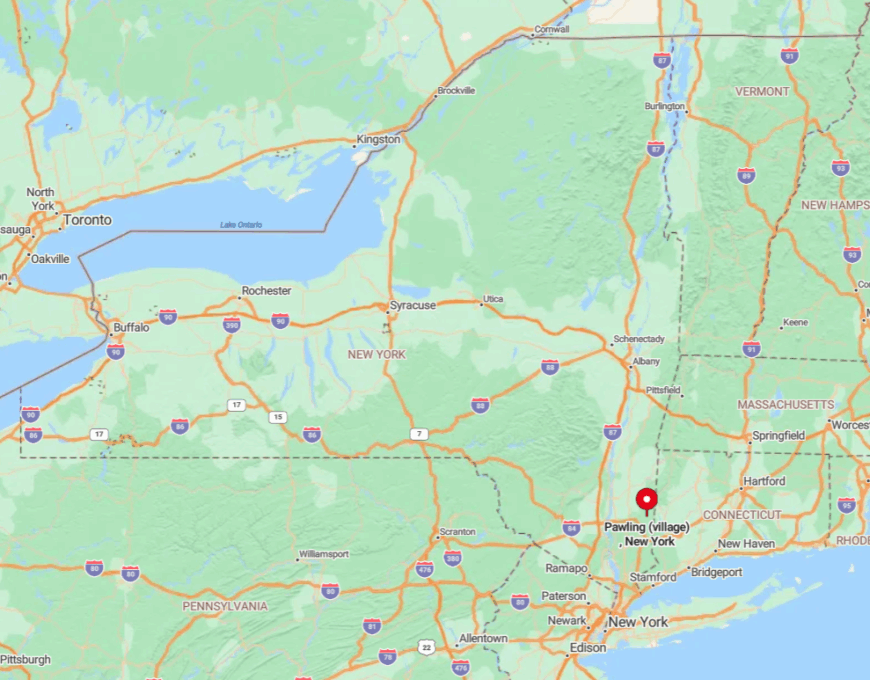
Pawling lies about 70 miles north of New York City in the Harlem Valley of eastern Dutchess County. Rolling farmland and foothills of the Taconic Mountains surround the village, offering views that haven’t changed much since the 18th century.
Travelers can arrive car-free on Metro-North’s Harlem Line, which stops two blocks from the village green, or by car via Route 22 and State Route 55. The proximity of the Appalachian Trail—crossing the rail line at the unique “AT” flag stop—makes Pawling a rare place where long-distance hikers mingle with history buffs.
16. Suffern: Unveil Suffern’s Role in the War with Historic Landmarks
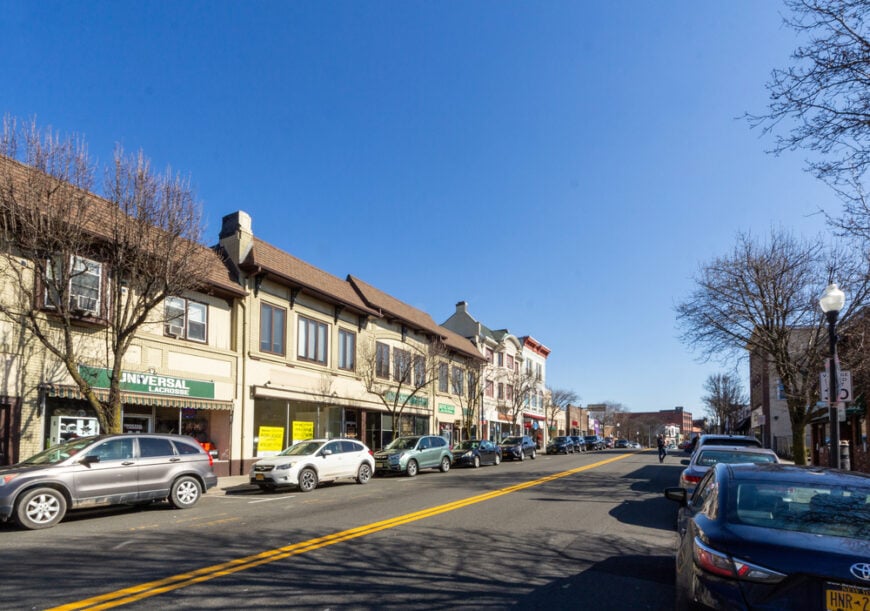
Suffern guarded the strategic Ramapo Pass, a critical gap that both armies fortified it repeatedly between 1776 and 1781.
A downtown walking tour highlights the Soldier’s Monument, one of the earliest U.S. memorials dedicated to common soldiers, and the Lafayette Theater, whose façade stands on the site of a Continental bivouac.
We enjoy stopping at the Suffern Railroad Museum in a 1871 depot to view a diorama of troop movements through the mountains. Nearby Torne Mountain rewards a short climb with panoramas showing just how narrow the pass was—perfect for controlling movement between New Jersey and the Hudson Highlands.
On weekends, the village green often hosts craft markets where artisans sell reproductions of powder horns and quill pens. An evening meal at the 1890 House invites diners to ponder stories of officers who once mapped strategies over similar tables.
Suffern presents 3-4 bedroom houses priced between $350,000 and $650,000, ideal for those seeking a charming historic town.
Where is Suffern?
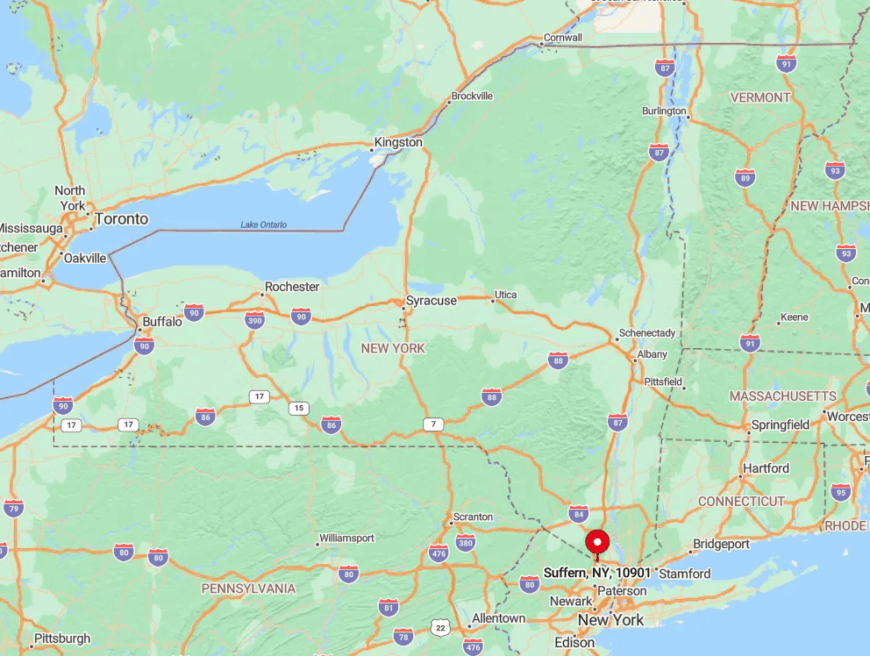
Located in the southwestern corner of Rockland County, Suffern brushes the New Jersey border and sits at the junction of the New York State Thruway (I-87/287) and Route 17. The NJ Transit Port Jervis Line stops downtown, making day trips from Hoboken or Manhattan easy.
Surrounding ridges funnel breezes through the pass, a natural corridor directing colonial trade and wartime maneuvers. Modern visitors experience the same gateway effect when the highway suddenly narrows into Main Street’s cozy storefronts.
15. Putnam Valley: Explore Historic Sites Amidst Scenic Beauty
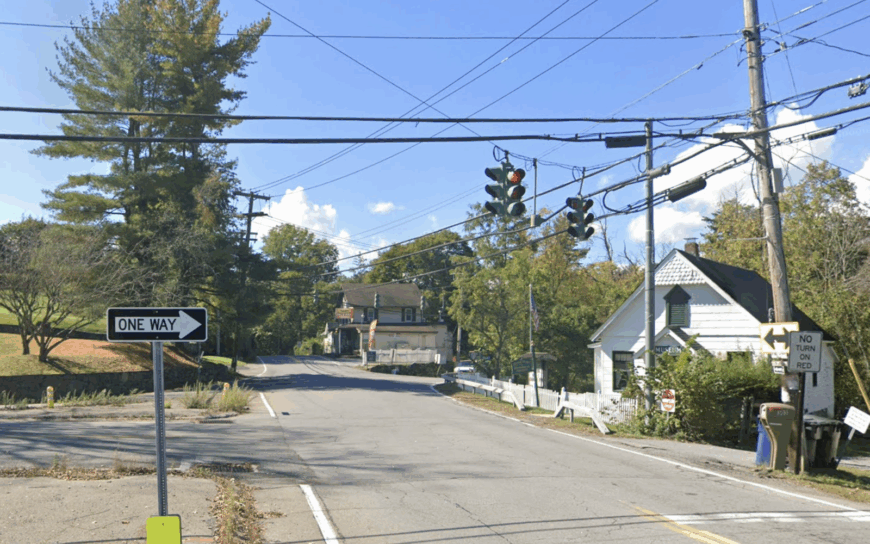
Known today as the “Town of Lakes,” Putnam Valley once sheltered scattered patriot farms that supplied Washington’s army at Peekskill and Fishkill. The little-publicized Adriance Farmhouse, a Dutch stone structure tucked near Lake Oscawana, still shows musket-ball scars on its north wall.
Our preferred morning begins with a paddle on Canopus Lake in Fahnestock State Park, followed by a visit to the Tompkins Corners Cultural Center, whose 1833 church hosts period-music concerts.
History hides in plain sight along Peekskill Hollow Road, where roadside markers reveal skirmishes that never made the major history books. Local eateries, like The Grill at Garrison, feature menus inspired by colonial recipes during special “Heritage Weekends.”
Clear night skies over the valley echo the days when campfires, not streetlights, dotted these hills. Putnam Valley’s 3-4 bedroom homes cost between $300,000 and $600,000, providing cozy options steeped in rich heritage.
Where is Putnam Valley?
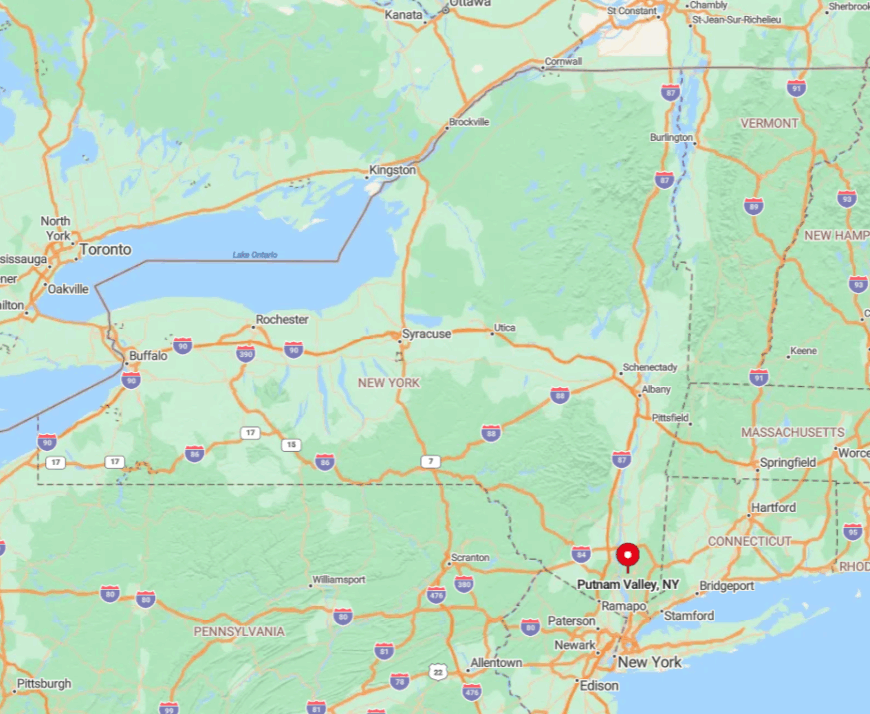
Putnam Valley sits just west of the Taconic State Parkway, roughly an hour’s drive north of New York City. Forested ridges and spring-fed lakes create natural barriers that once slowed troop movements, preserving the town’s rural character even now.
Public transit visitors can ride Metro-North to Peekskill and grab a 15-minute taxi into the valley. The winding approach along Oscawana Lake Road mirrors the same dirt paths wagons used to haul supplies to Continental depots.
14. Bedford: Wander Through a Town Rebuilt After the British Burning
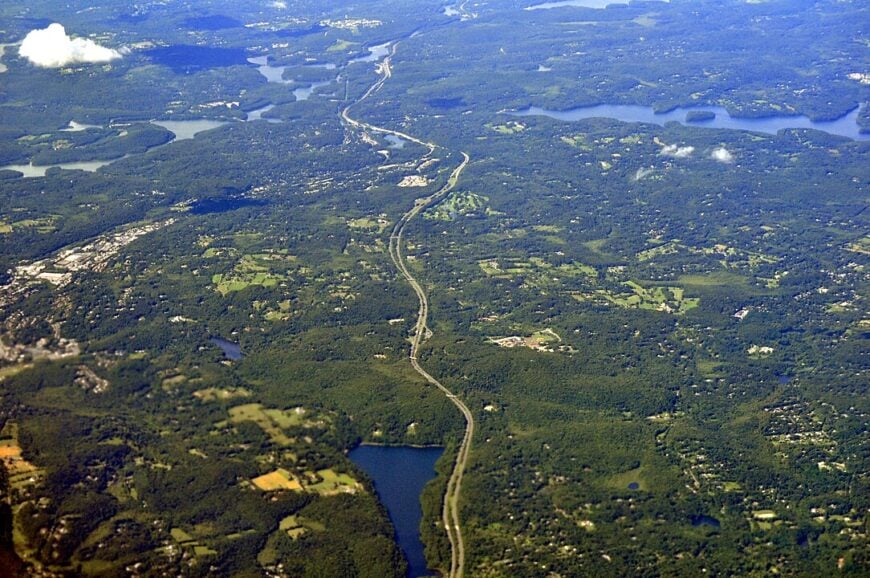
Bedford’s village green looks serene, yet in July 1779, British dragoons torched almost every building in sight. Rebuilt homes ring the green today, including the 1787 Court House, the second-oldest in New York still in use.
We like to start at the historical society’s Schoolhouse Museum, where charred beam fragments sit beside letters pleading for aid. A short stroll leads to the Bedford Oak, estimated at 500 years old and likely a silent witness to both the attack and the reconstruction that followed.
Main Street’s cafés occupy lots once filled with rubble, offering a tangible sense of resilience. For an atmospheric finish, sunset at the nearby Mianus River Gorge Preserve casts golden light on stone walls first laid by colonial farmers.
Bedford offers 3-4 bedroom houses ranging from $350,000 to $650,000, welcoming those who appreciate Revolutionary War history.
Where is Bedford?
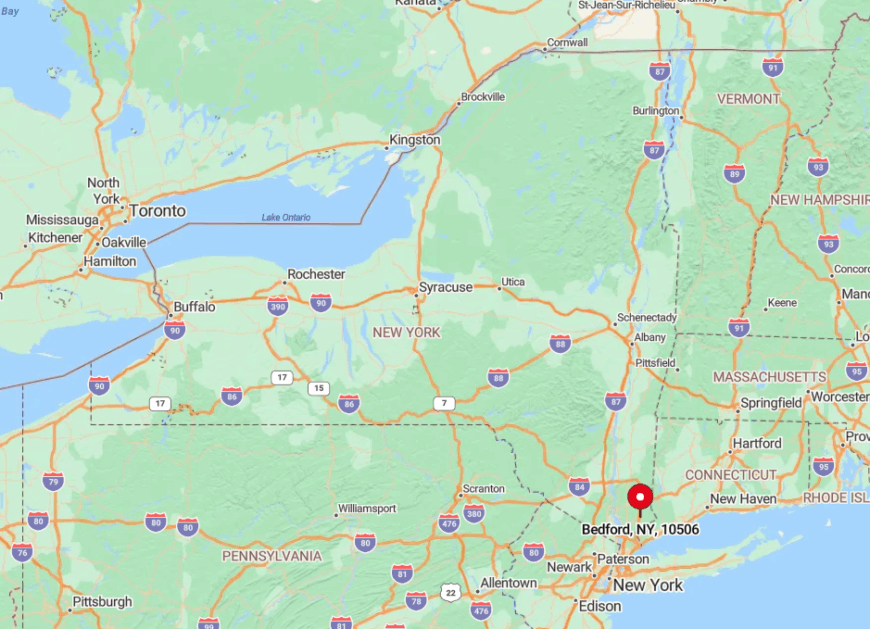
Bedford rests in northern Westchester County near the junction of Routes 22, 172, and 117, about 45 miles north of Manhattan. The town’s high ground made it both a tempting target and a useful lookout during the war.
Today, Metro-North’s Katonah station is a ten-minute drive away, while Interstate 684 curves just east, reflecting lines of march recorded in wartime diaries. Rolling horse farms and low fieldstone fences preserve the open vistas soldiers once used to gauge enemy movement.
13. Tarrytown: Follow the Trail of Captured British Spy Major André
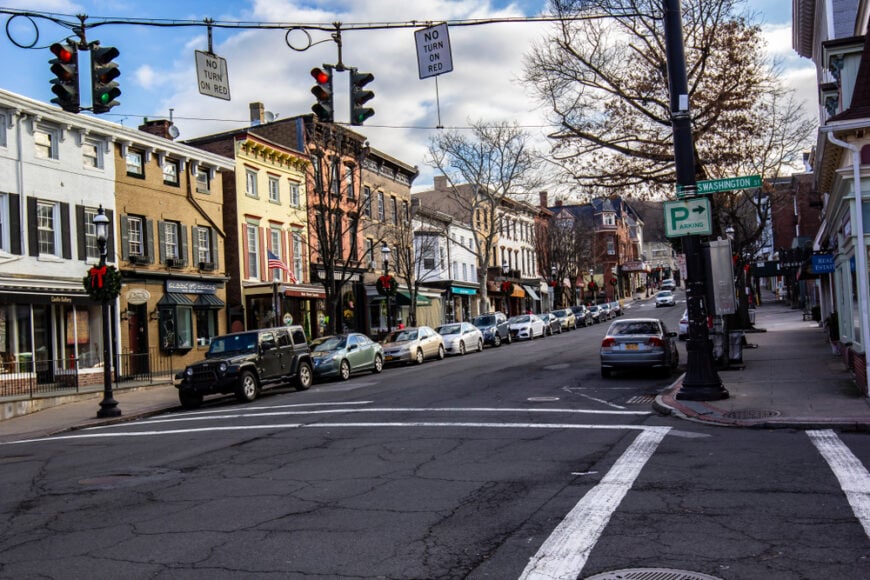
Tarrytown earns its place in history as the spot where three local militiamen intercepted Major John André and exposed Benedict Arnold’s treason. Patriots Park marks the exact roadside capture, and the nearby Captors’ Monument recounts how the trio refused André’s bribes.
Our walking loop continues to Lyndhurst Mansion, whose later-era Gothic towers still offer sweeping Hudson views once patrolled by Continental river sloops. On South Broadway, the Historical Society displays André’s boot buckle, seldom shown but requested by many visiting students.
Afterward, we recommend a riverside picnic watching barges glide past the new Governor Mario Cuomo Bridge, tracing the same channel where warships once anchored.
Evening ghost tours add a dash of Sleepy Hollow lore without overshadowing the real-life intrigue. Tarrytown boasts 3-4 bedroom homes priced between $400,000 and $700,000, combining scenic beauty with historical significance.
Where is Tarrytown?
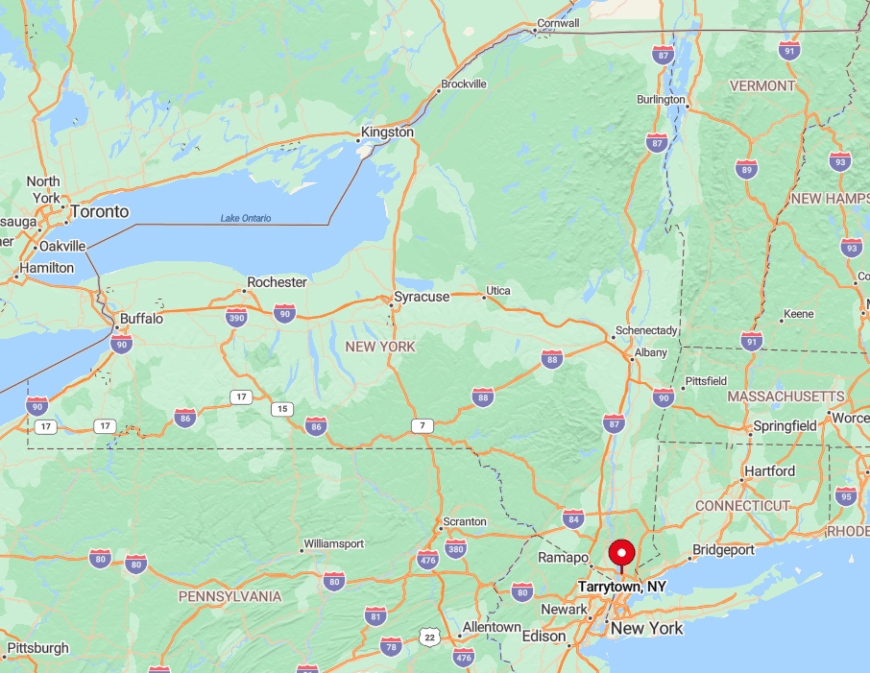
Set on the eastern bank of the Hudson River in central Westchester County, Tarrytown sits at the western terminus of I-287. Metro-North’s Hudson Line stops beside the river, giving riders water views akin to those seen by 18th-century sloops.
Steep hills rise quickly from the shoreline, creating natural chokepoints ideal for the militia roadblock that snared André. U.S. Route 9 threads through town, following what was once the Albany Post Road.
12. Sleepy Hollow: Visit the Old Dutch Church from Revolutionary Days
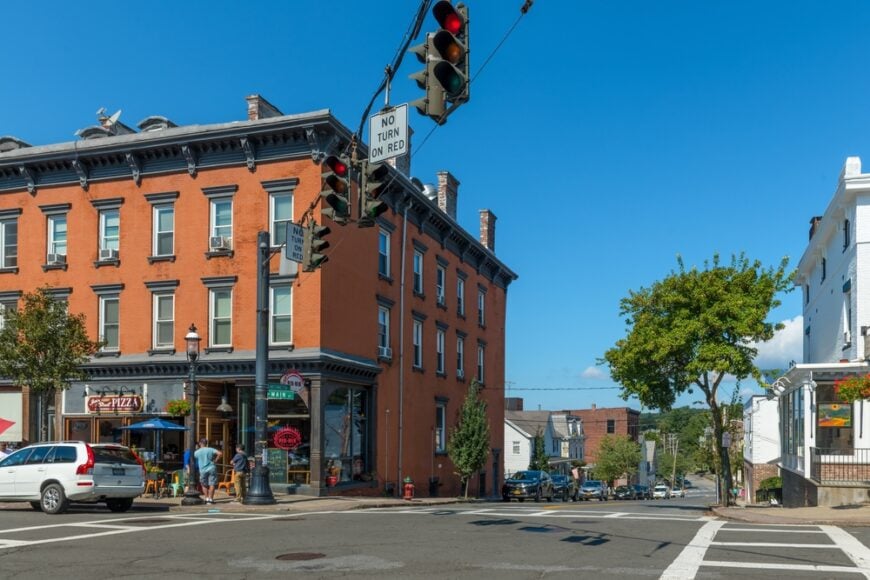
Though famous for literary legends, Sleepy Hollow’s stone churchyard holds real patriot graves dating back to 1776. The Old Dutch Church, built in 1697, doubled as a supply storehouse during the war, its thick walls perfect for safeguarding flour and musket powder.
We enjoy guided lantern walks that weave soldier narratives into Irving’s folklore, bringing both fact and fiction alive under one roof. A short walk away, Philipsburg Manor interprets the life of tenant farmers between British-held New York City and rebel forces upriver.
Daytime visitors can admire views from the Headless Horseman Bridge while learning how the crossing once served messengers riding north with dispatches.
Local bakeries sell “hard-tack” shortbread, a sweeter tribute to the era’s less palatable ration. Sleepy Hollow’s 3-4 bedroom homes range from $400,000 to $700,000, perfect for history buffs and families.
Where is Sleepy Hollow?
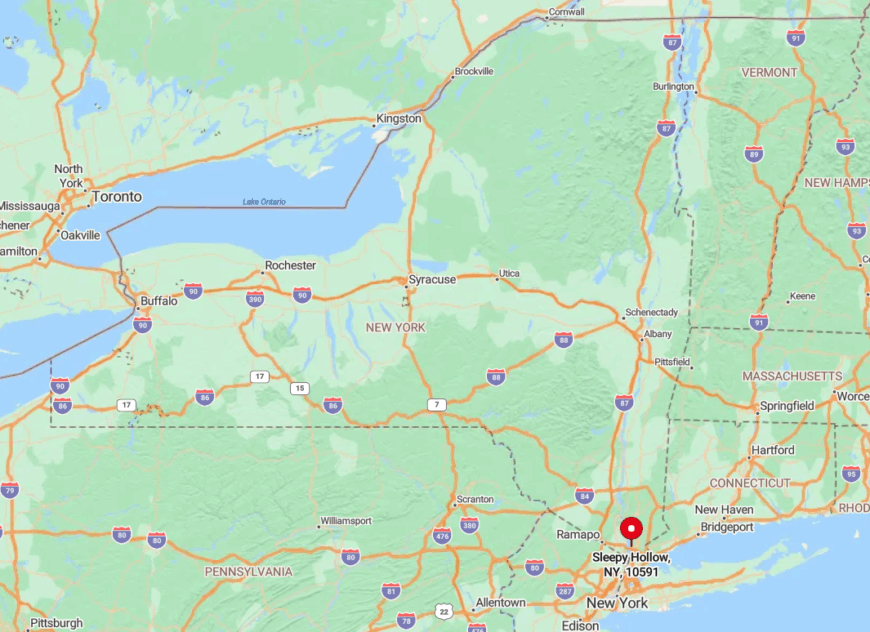
Sleepy Hollow borders Tarrytown along the Hudson, sharing the same train stop on Metro-North’s Hudson Line. Rising bluffs and dense woodland once provided perfect cover for spies and storybook specters.
The village clusters along U.S. Route 9, making it accessible by car while retaining a walkable historic core. From the riverside promenades, visitors spot the Palisades cliffs that framed many naval skirmishes during the war.
11. Newburgh: Step Inside America’s First Public Historic Site
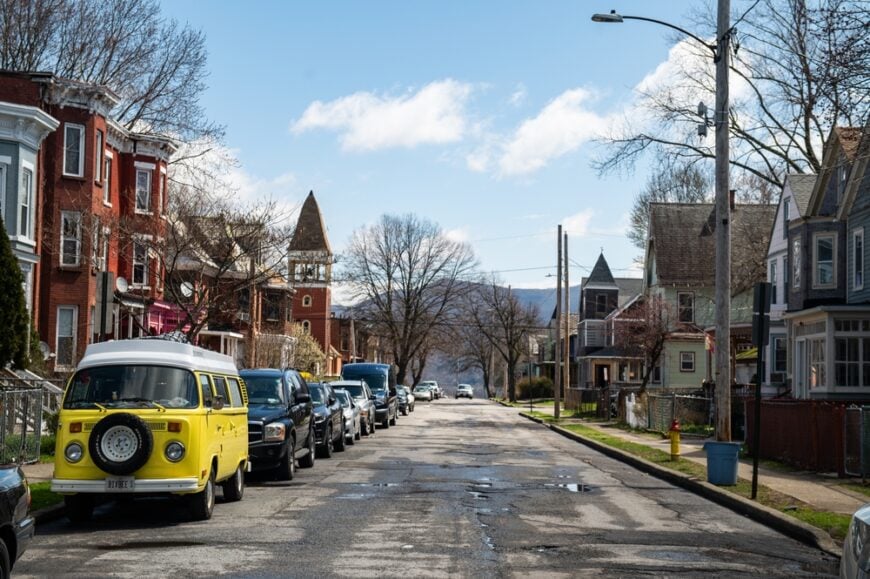
Newburgh’s Hasbrouck House became Washington’s headquarters from 1782 to 1783, and in 1850, the state preserved it as the nation’s first publicly owned historic site. Inside, original dispatches line the study where the general famously refused a monarchy for the new republic.
A recommended itinerary includes the adjacent Museum of the Hudson Highlands, where a balustrade carved from the British warship HMS Culloden surprises many guests.
Strolling the Newburgh Heritage Trail reveals nearly 40 markers, from powder magazines to the former site of the “Newburgh Conspiracy” meeting hall. Cafés along Liberty Street occupy row houses built for officers’ families at war’s end.
Finish with sunset on the waterfront, where schooners once carried supplies; today’s docks host replica gunboats each July. Newburgh features 3-4 bedroom houses costing between $300,000 and $600,000, an excellent choice for those drawn to historic sites.
Where is Newburgh?
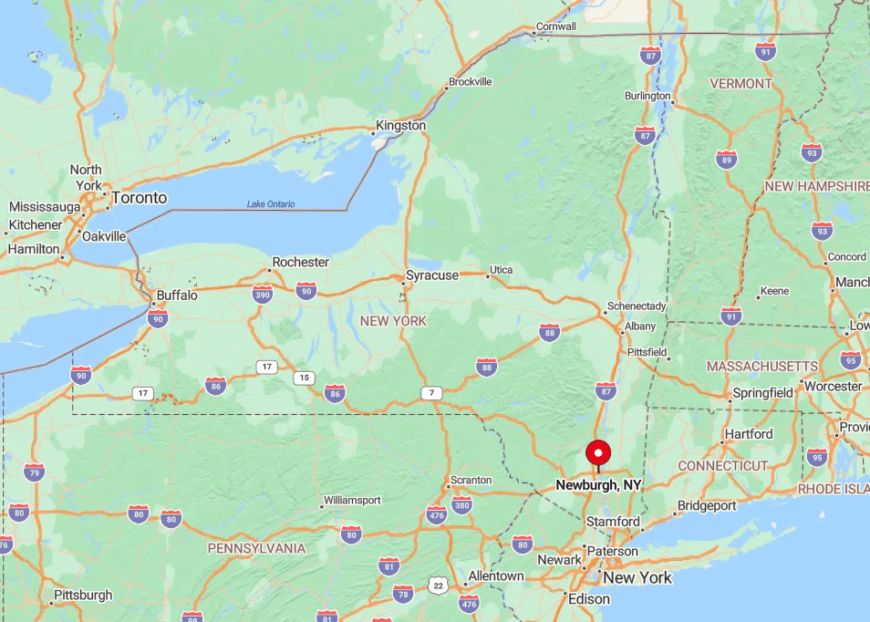
Sitting on the west bank of the Hudson River in Orange County, Newburgh anchors the Newburgh-Beacon Bridge on I-84. Steep streets climb from the river to a ridge that offered perfect artillery placement, now providing panoramic views for visitors.
Stewart International Airport lies five miles southwest, and Metro-North’s Hudson Line connects via the ferry from Beacon on the opposite shore. The deepwater harbor that once protected Continental supply sloops still welcomes tall ships during annual fleet events.
10. Fort Montgomery: Explore the Ruins of a Strategic Stronghold
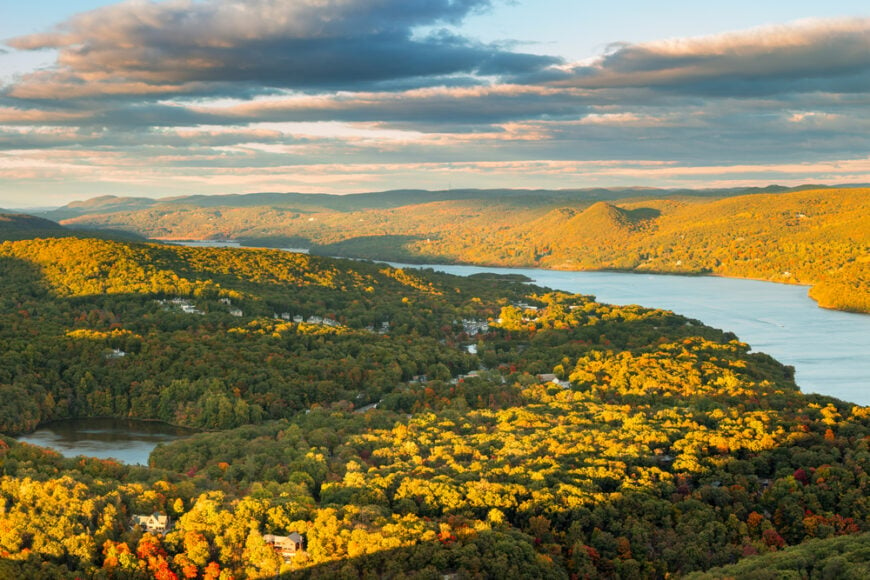
Fort Montgomery’s crumbling stone walls stand amid forest, overlooking the narrows where iron chains once blocked British ships. Interpretive signs guide guests through cannon platforms, powder magazines, and a redoubt captured in the fierce 1777 assault.
Rangers often fire reproduction mortars on summer weekends, sending echoes across the Hudson as they did during the battle. A short woodland path leads to the Popolopen Suspension Bridge, a hidden vista of the Bear Mountain Bridge and surrounding cliffs.
The site’s small museum showcases artifacts dredged from the river, including a rare grapeshot canister. Families linger at picnic tables carved from felled red oak, their rings counting years long predating the war.
Fort Montgomery offers 3-4 bedroom homes in the $300,000 to $600,000 range, blending historic charm with comfortable living.
Where is Fort Montgomery?
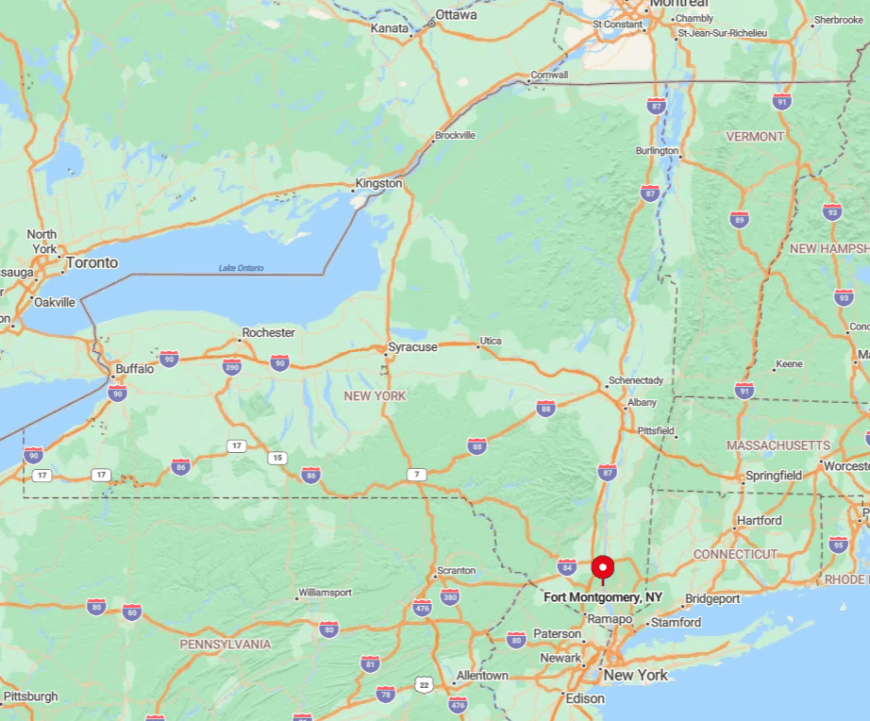
The fort lies in Highlands, Orange County, just north of the Bear Mountain Traffic Circle, where U.S. 9W meets Route 202. Its hilltop perch guards the river narrows, explaining the site’s wartime importance.
Visitors from New York City can reach it in about an hour via the Palisades Interstate Parkway and the Bear Mountain Bridge. The Appalachian Trail crosses nearby for hikers, allowing a seamless detour into the ruins.
9. Goshen: Honor Fallen Heroes at the Battle of Minisink Monument
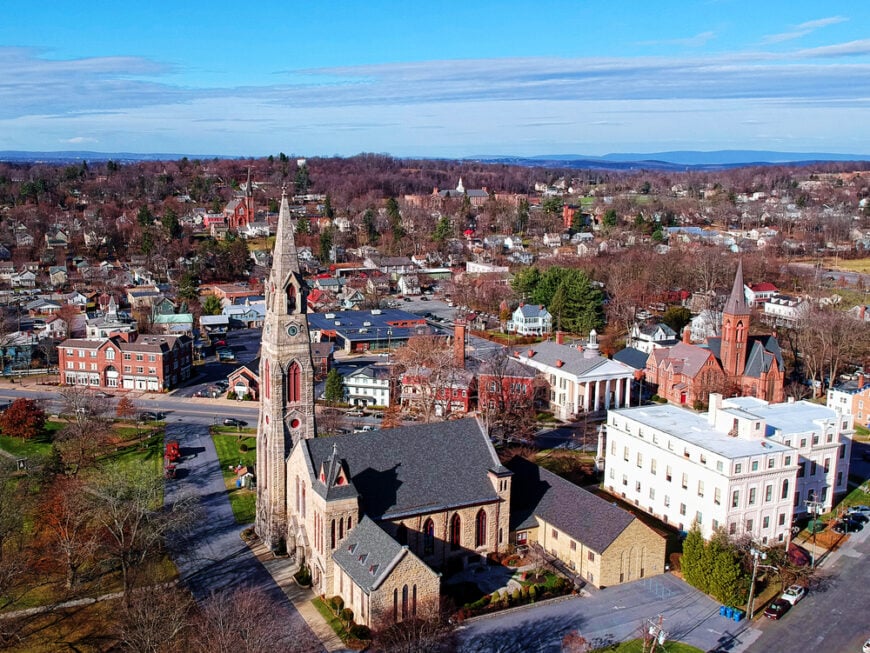
Goshen may be renowned for harness racing, yet its stone obelisk on Main Street memorializes local militiamen lost at the 1779 Battle of Minisink. The Orange County Historic Courthouse, built in 1841 on the site of earlier colonial courts, houses muskets recovered from the battlefield.
We suggest timing a visit with the Great American Weekend, when living-history units set up encampments on the village green. A short drive south leads to the Minisink Battleground Park, where self-guided trails explain how the ill-fated patriots marched from Goshen.
The Harness Racing Museum offers a surprising collection of war-era tavern signs alongside sulkies in town. Evening strolls along Church Park Historic District reveal Federal-style homes occupying lots first parceled in 1714.
Goshen’s 3-4 bedroom houses typically range from $300,000 to $600,000, ideal for settling in a town rich with Revolutionary War stories.
Where is Goshen?
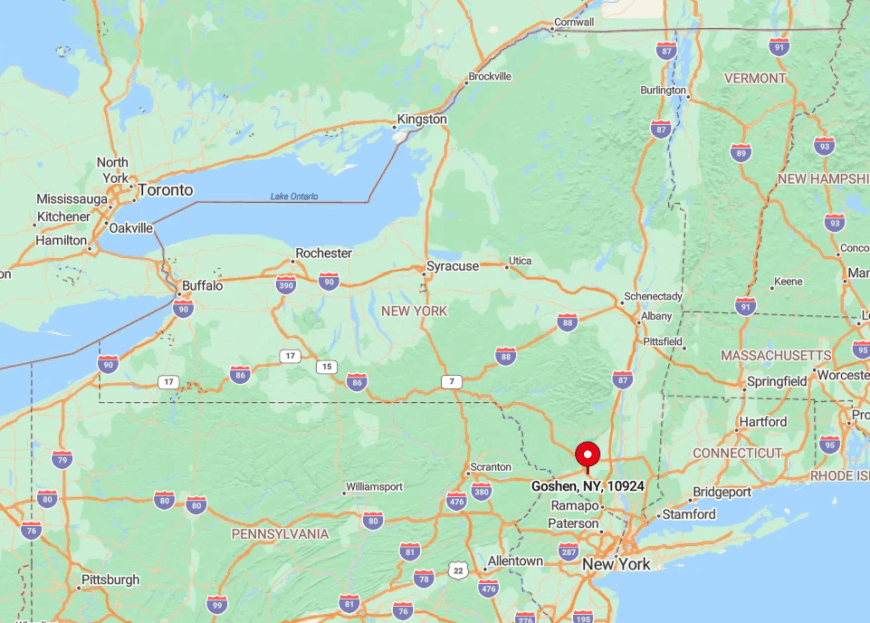
Goshen sits at the junction of NY Route 17 and Route 207 in central Orange County, roughly 60 miles from Manhattan. Low ridges to the west funneled colonial settlers and raiding parties, making the hamlet an assembly point during the war.
Today, Coach USA buses link Goshen to the Port Authority Terminal, while drivers use the Quickway (Route 17/I-86). The village’s compact grid allows visitors to explore every landmark on foot within an afternoon.
8. Cold Spring: Experience a Historic Village Near West Point
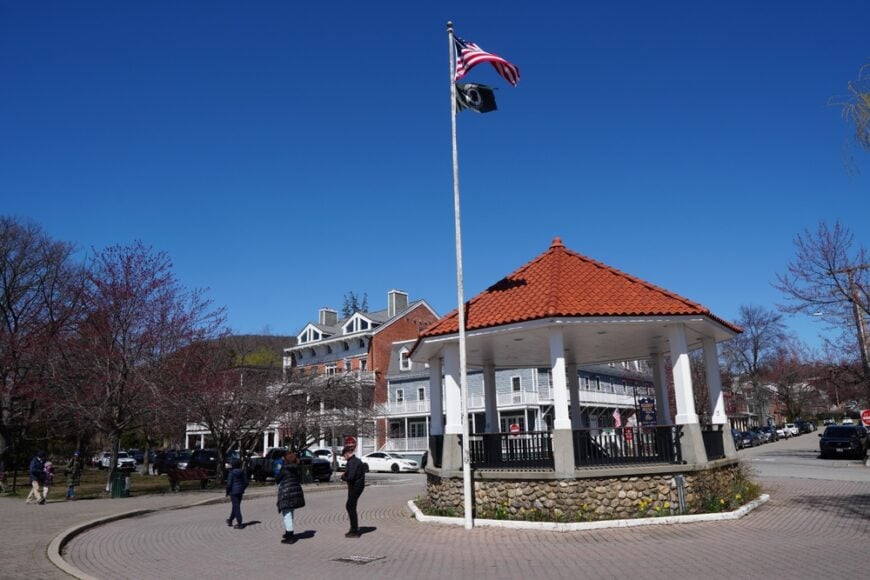
Cold Spring’s charming Main Street owes its 19th-century look to prosperity from the West Point Foundry, which cast the Parrott gun that helped win the Civil War, yet the village’s Revolutionary links run deeper.
West Point sits directly across the river, and patriots ferried iron and messages from these shores during the earlier conflict. We always stop at the West Point Foundry Preserve, where interpretive panels describe earlier forges that secretly supplied the Continental Army.
Antiques shops occupy clapboard storefronts, some retaining original Dutch cellar doors. Hikers can ascend Breakneck Ridge for a bird’s-eye view of Constitution Island, whose fortifications once worked in concert with West Point.
After the climb, a cone from Moo Moo’s Creamery feels richly deserved. Cold Spring features 3-4 bedroom homes priced between $350,000 and $650,000, inviting residents to explore history and nature.
Where is Cold Spring?
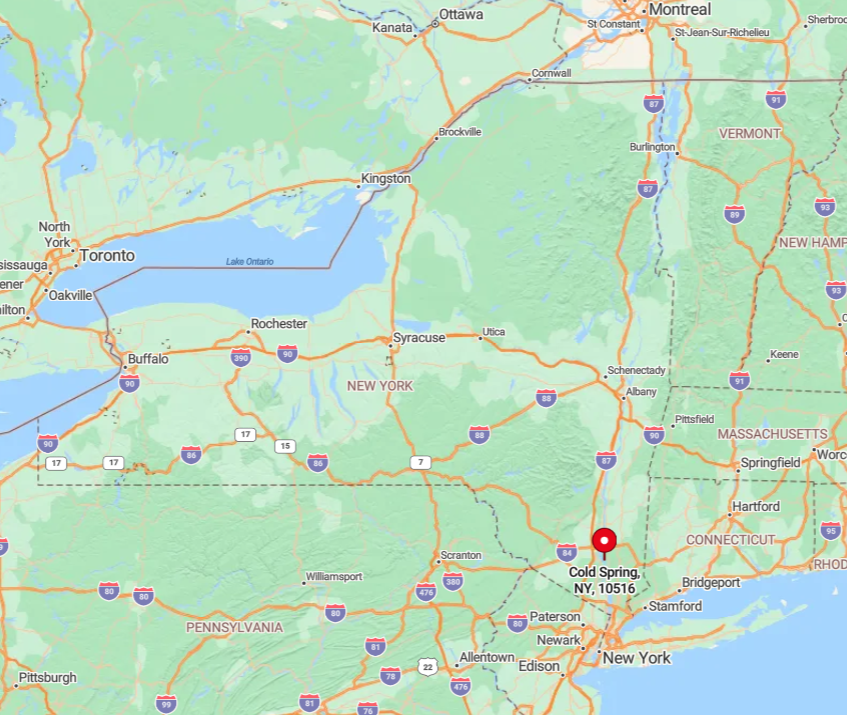
Cold Spring lines the eastern bank of the Hudson in Putnam County, just south of Beacon. Metro-North’s Hudson Line drops passengers steps from the waterfront bandstand, echoing 18th-century landings by river sloop.
Route 9D hugs the river cliffs, giving drivers glimpses of the military academy’s spires across the water. Steep highlands frame the village, forming a natural citadel that suited wartime needs for secrecy.
7. Nyack: Discover a Riverside Village with Revolutionary Ties

During the war, Nyack boatyards built sloops that shuttled supplies through British blockades, exploiting inlets hidden by tall palisade cliffs. Today, Memorial Park’s shoreline plaques map those covert runs while offering picnic tables shaded by old sycamores.
The Edward Hopper House Museum, birthplace of the famed painter, hosts occasional exhibits on how river light shaped art and naval tactics. Shoppers browse the 18th-century DePew House gift shop for replicas of naval flags stitched locally.
Village lore points to an escape tunnel beneath South Broadway, rumored to have hidden patriot couriers—ask docents at the Historical Society for the latest findings.
Evenings bring live music to the Gazebo, where river breezes still carry echoes of cannon fire from across the water. Nyack offers 3-4 bedroom houses costing $350,000 to $650,000, a vibrant community with historic roots.
Where is Nyack?
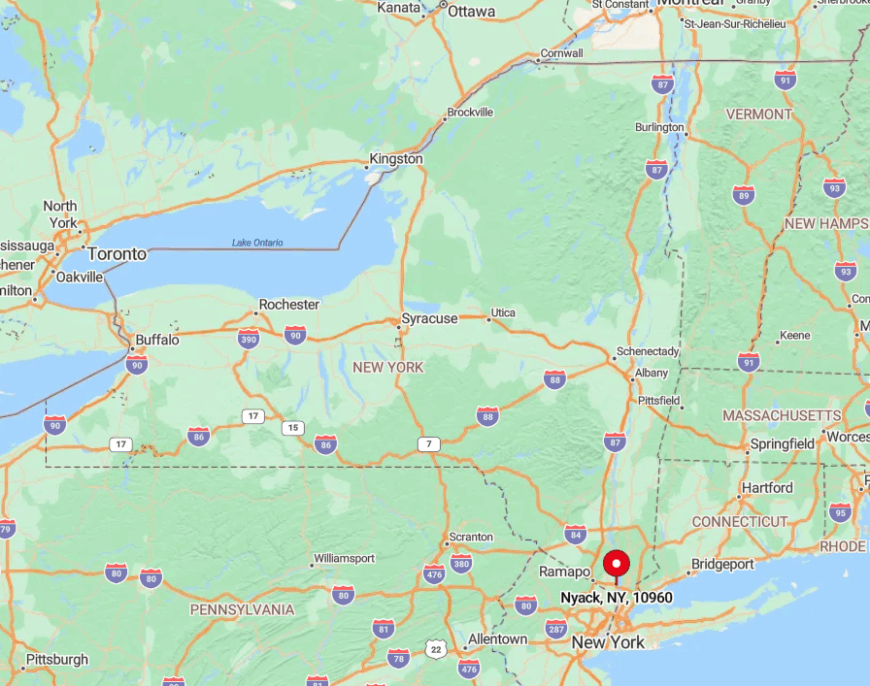
Nyack sits in Rockland County just north of the Governor Mario Cuomo Bridge, accessible via U.S. Route 9W and the New York State Thruway. Steep slopes of the Palisades rise immediately west, making the village a snug ribbon between cliff and river.
Coach USA buses provide frequent service from Manhattan, while cyclists favor the bridge’s new path straight into downtown. The dramatic terrain that once hid boat builders now rewards visitors with sweeping views up and down the Hudson.
6. New Windsor: Visit Washington’s Final Wartime Headquarters
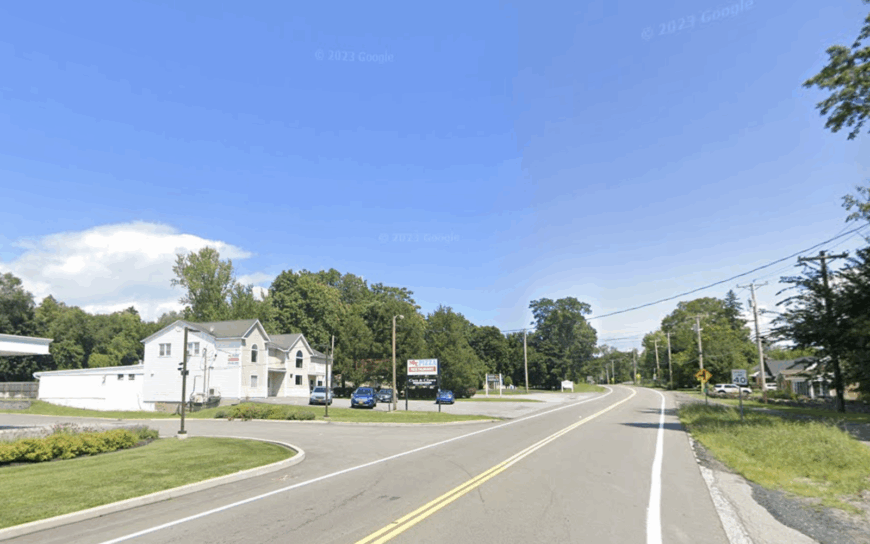
In winter 1782-83, over 7,000 Continental soldiers camped in New Windsor, waiting to learn if peace would truly arrive. Reconstructed huts line the New Windsor Cantonment State Historic Site, where costumed interpreters demonstrate black-powder drills and forge iron nails on demand.
The nearby Temple of Virtue, a meeting hall built for officers, hosted Washington’s official Proclamation of Peace—visitors can still stand where the war effectively ended.
We recommend pairing the cantonment visit with Knox’s Headquarters, an elegant stone home where General Knox planned artillery training. The National Purple Heart Hall of Honor next door links the Revolutionary encampment to later American sacrifices.
Picnic grounds along the mood-lifting Moodna Creek provide a quiet spot to reflect on the long road from Valley Forge to victory. New Windsor’s 3-4 bedroom homes are valued between $300,000 and $600,000, perfect for those seeking a town with deep historical ties.
Where is New Windsor?
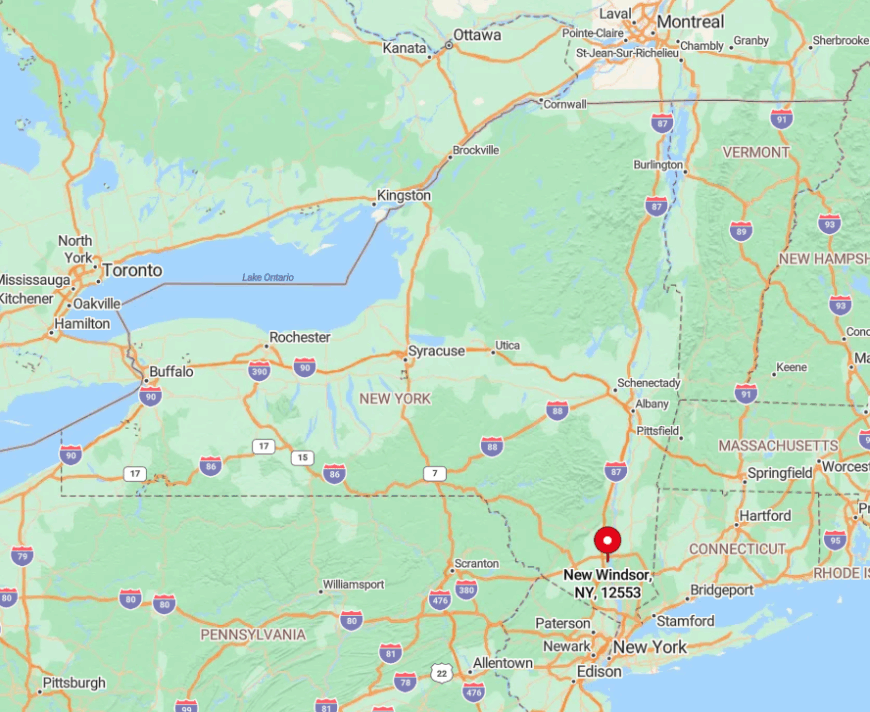
New Windsor borders Newburgh in Orange County, minutes from Exit 17 of the New York State Thruway (I-87). Flat meadows near the Moodna Creek offered ideal space for a massive hut city, and those open fields remain largely undeveloped.
Stewart International Airport lies just west, offering an aerial first glimpse of the cantonment rows for arriving passengers. Drivers can also reach the site five minutes from the Newburgh riverfront via Route 300.
5. Peekskill: Trace Revolutionary Footsteps Along the Hudson
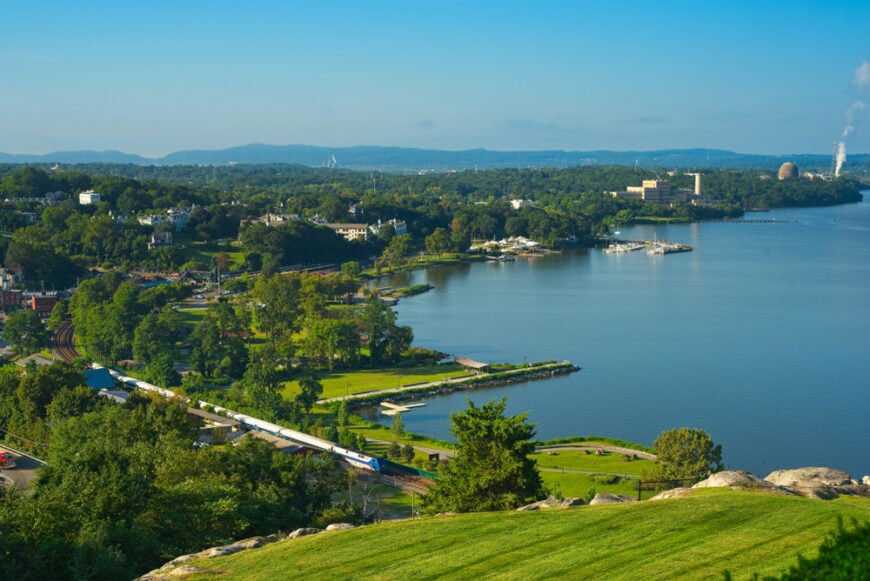
Peekskill’s riverbank served as a military depot until British raids 1777 torched warehouses packed with salt pork and powder. Today, Fort Hill Park’s earthworks overlook the same channel, and QR codes link smartphone users to diary excerpts from soldiers who defended the bluff.
The Peekskill Museum, housed in a 19th-century mansion on Union Avenue, holds bronzed cannonballs dredged by river divers. A favorite hidden gem is the Drum Hill School rooftop observatory, occasionally opened for stargazing nights that recall sentries scanning for enemy sails.
Craft beer aficionados gather at Peekskill Brewery, whose taps are named for local regiments. Blue Mountain Reservation’s trails, once patrol routes, now offer mountain-bike thrills and quiet war monuments alike.
Peekskill boasts 3-4 bedroom houses priced from $350,000 to $650,000, blending urban convenience with colonial heritage.
Where is Peekskill?
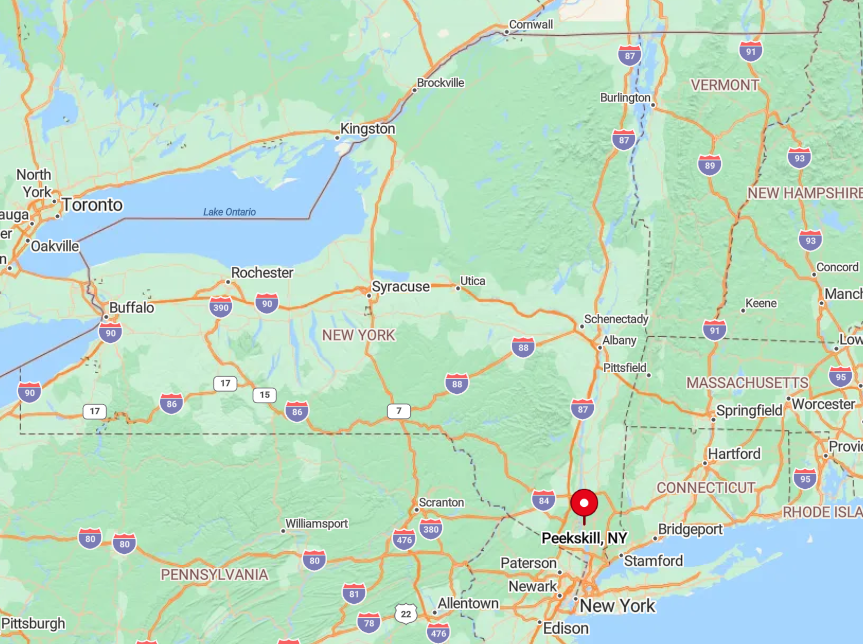
Nestled where the Hudson widens into Peekskill Bay, the city lies in northwestern Westchester County along U.S. Route 9. Metro-North’s Hudson Line brings visitors directly to the waterfront, mirroring historic barge landings.
Steep streets climb to residential ridges that once housed signal fires visible for miles. Drivers approaching the Bear Mountain Parkway trace a route first surveyed by military engineers in 1776.
4. Fishkill: Explore the Ruins of a Revolutionary War Encampment
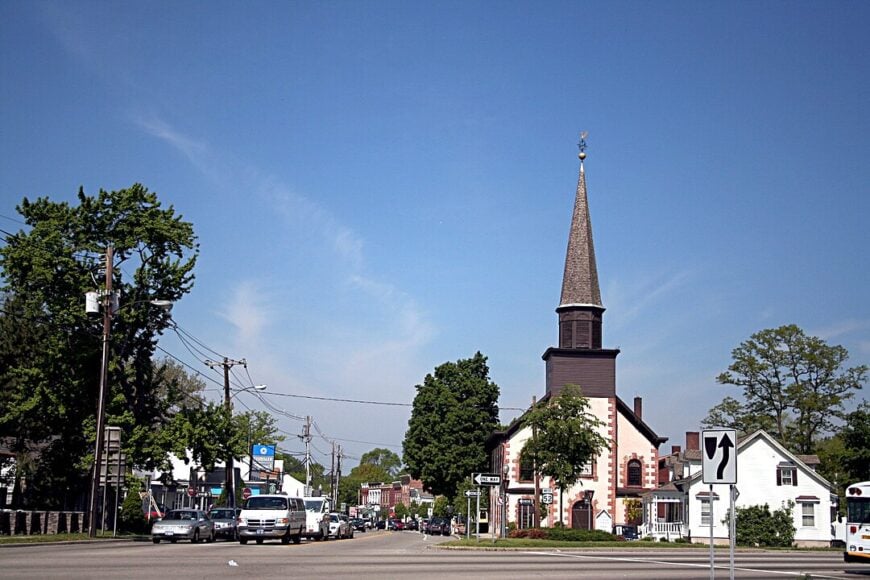
Fishkill’s name stems from the Dutch “vis kil” or “fish creek,” but soldiers knew it as a bustling supply depot second only to Valley Forge. The Van Wyck Homestead Museum sits beside the stone foundations of warehouses that once fed thousands.
Inside, visitors can view payroll ledgers signed by Alexander Hamilton during his quartermaster stint. A mile north, remnants of barracks emerge from wooded knolls in the Fishkill Supply Depot Archaeological Site, accessible on guided hikes each summer.
A tip: stop at the Dutchess Biercafé afterward for hearty fare echoing colonial Dutch staples. Across Route 9, Blodgett Memorial Library’s reading room displays musket flints unearthed during lawn work—a discovery few tourists hear about.
Fishkill features 3-4 bedroom homes ranging from $300,000 to $600,000, offering an inviting atmosphere for history enthusiasts.
Where is Fishkill?
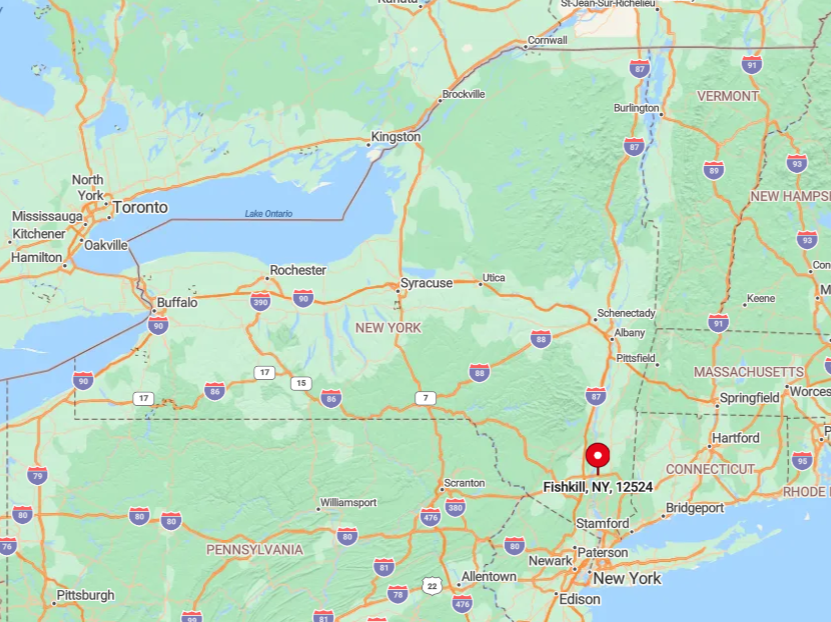
Fishkill straddles the intersection of I-84 and Route 9 in southern Dutchess County, an alignment identical to colonial stagecoach routes. The Hudson Highlands rise immediately west, shielding the depot from sudden river raids.
Modern travelers reach the village via the Newburgh-Beacon Bridge or by Metro-North to Beacon, with a short taxi south. Open farmland around the supply site helps visitors visualize parade grounds that once seemed to stretch forever.
3. White Plains: Stand on the Grounds of a Crucial War Encounter
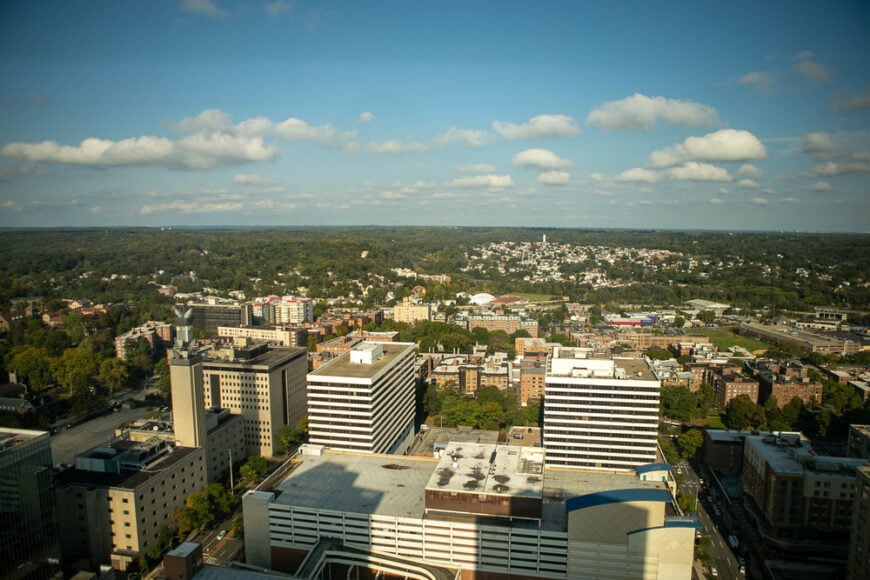
The Battle of White Plains on October 28, 1776, proved pivotal in stalling British momentum after the fall of New York City. Battle Hill Park’s granite obelisk marks the Continental defensive line where Washington’s troops repelled repeated assaults.
Nearby, the Jacob Purdy House served twice as headquarters and now offers tours showing original floorboards scarred by dragged artillery. We appreciate stopping at the White Plains Rural Cemetery, where a simple slate marker honors an unknown soldier found decades later under a farm field.
Downtown eateries along Mamaroneck Avenue embrace the theme with menu items like “Patriot Potpie.” Each October, costumed volunteers march from the courthouse to the hill, beating drums that once signaled real orders.
White Plains has 3-4 bedroom houses valued between $400,000 and $700,000, a lively area rich in Revolutionary War history.
Where is White Plains?
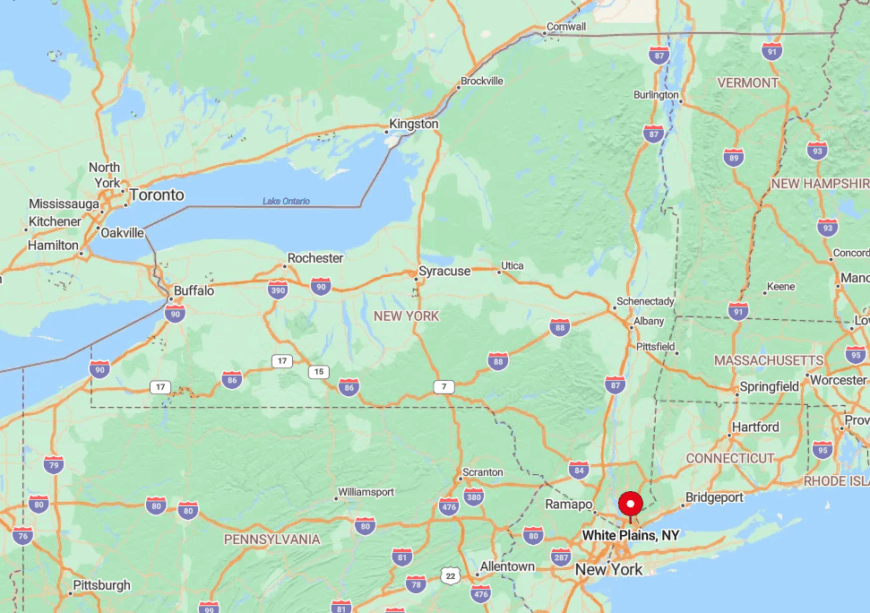
As Westchester County’s seat, White Plains lies 25 miles north of Manhattan along the Bronx River Parkway and I-287. Its commanding ridge offered the Hudson and Long Island Sound sightlines, explaining the battle’s location.
Metro-North’s Harlem Line provides a 40-minute ride from Grand Central, whereas drivers often exit at the Cross-Westchester Expressway. Although high-rises now ring the battlefield, interpretive panels help visitors picture the once-open farmland where lines clashed.
2. Stony Point: Walk the Battlefield of a Midnight Victory
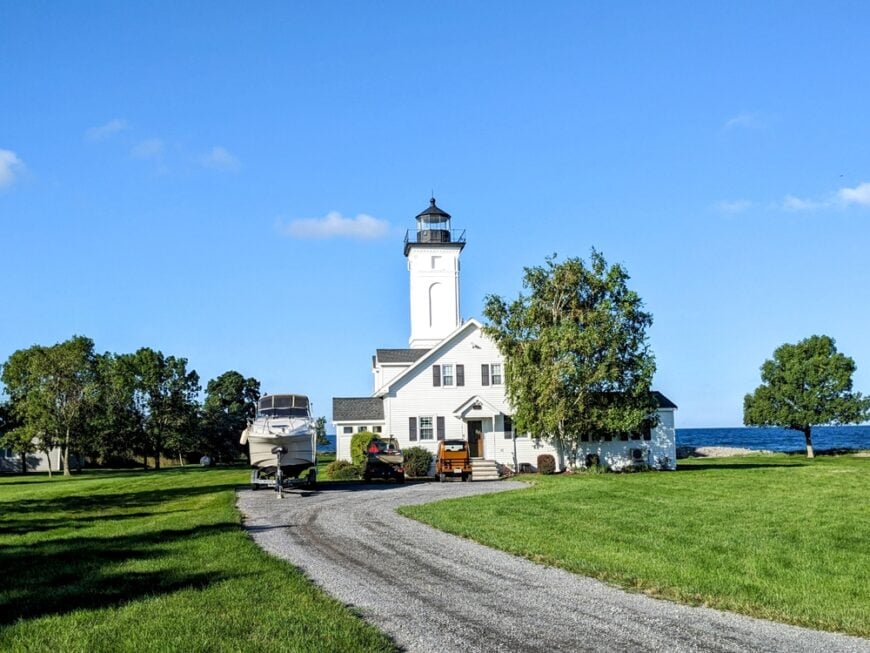
Stony Point Battlefield saw one of the war’s most daring assaults: a midnight bayonet charge on July 16, 1779, that reclaimed the fort in just 25 minutes.
Today, the lighthouse—New York’s oldest on the Hudson—guides visitors across the same promontory where General Wayne’s troops waded through tidal flats. Summer weekends feature musket drills and bread baked in a recreated camp oven that wafts tempting aromas downriver.
We relish the short Battlefield Trail, which winds past artillery positions to a bluff with sweeping views of Haverstraw Bay. The museum’s fiber-optic map lights up troop movements in dramatic sequence, a feature kids often replay several times.
Picnic tables under locust trees commemorate soldiers who shared similar meals before the fateful charge. Stony Point offers 3-4 bedroom homes priced from $300,000 to $600,000, combining scenic landscapes with historic charm.
Where is Stony Point?
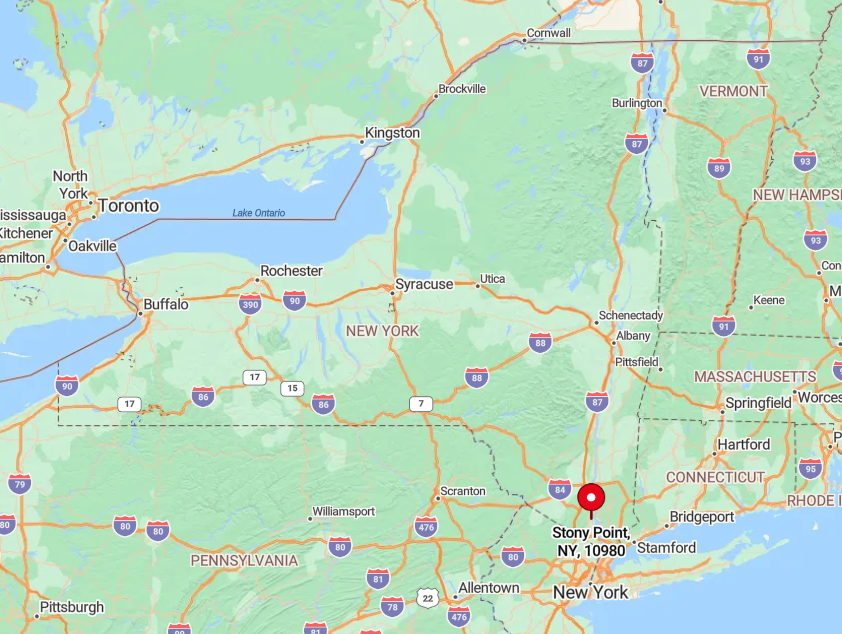
Located on a rocky peninsula in northern Rockland County, Stony Point sits along U.S. Route 9W about an hour from Manhattan. The Hudson narrows here, and tidal shallows still appear at low tide, mirroring conditions faced by attacking columns.
Parking for the battlefield lies just off Park Road; the Palisades Interstate Parkway offers a scenic alternative route. Boaters can also dock at nearby marinas and walk a half-mile to the entrance.
1. Tappan: Uncover the Colonial Charm of DeWint House
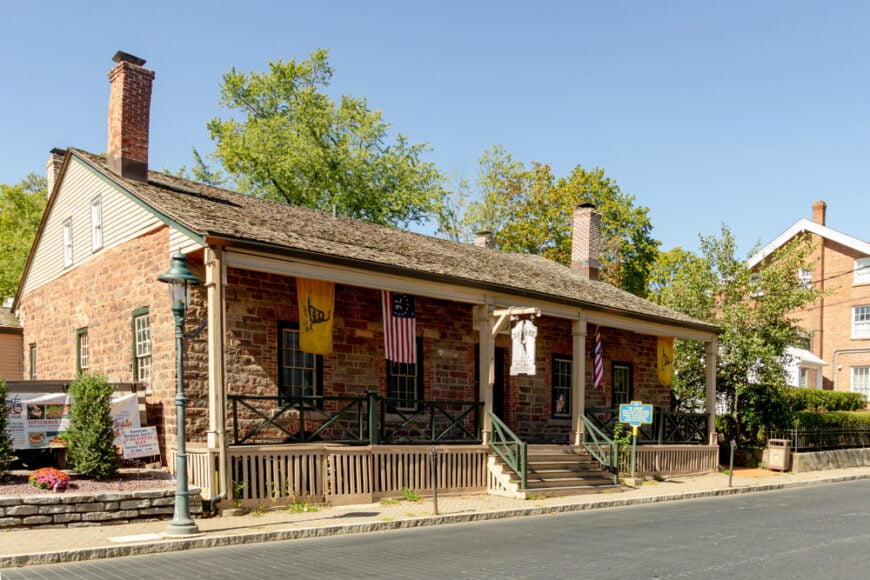
Tappan includes the DeWint House, where Washington lodged four times, and the ’76 House tavern, the state’s oldest. The stone DeWint House features Dutch gambrel roofs and original Delft tiles around the hearth where war councils met in 1780.
Across the green, the Tappan Reformed Church graveyard holds both patriot and British dead, reflecting the war’s tangled loyalties. Visitors can enjoy lunch in the very room where captured spy Major André dined before his execution nearby.
A lesser-known gem is the Manse Barn Art Center, where hand-hewn beams once hid confiscated Loyalist supplies. Quiet streets lined with shade trees encourage slow exploration, rewarding attentive walkers with plaques marking everything from powder magazines to the site of the war’s first military court-martial.
Tappan presents 3-4 bedroom houses typically costing between $300,000 and $600,000, ideal for those passionate about Revolutionary heritage.
Where is Tappan?
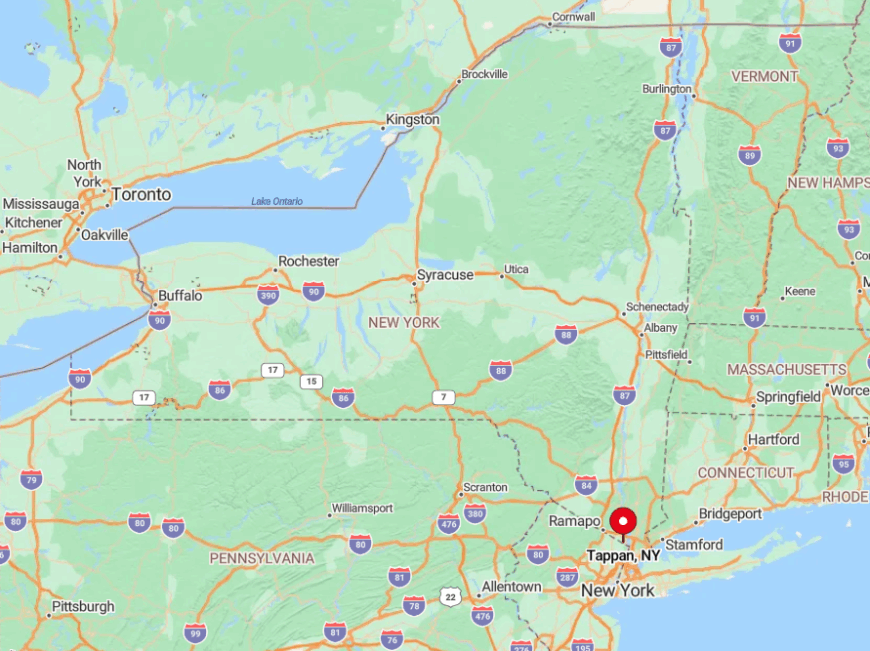
Tappan sits just north of the New Jersey border in Rockland County, minutes off the Palisades Interstate Parkway at Exit 5. Its location behind the Palisades cliffs offered security while remaining close to ferry crossings into British-held Manhattan.
Today, Coach buses from Manhattan stop within walking distance of the historic district, and ample signage guides drivers along Old Tappan Road. Broad meadows surrounding the hamlet still resemble sketches in Washington’s field journals, providing an evocative finale to any Revolutionary road trip.






